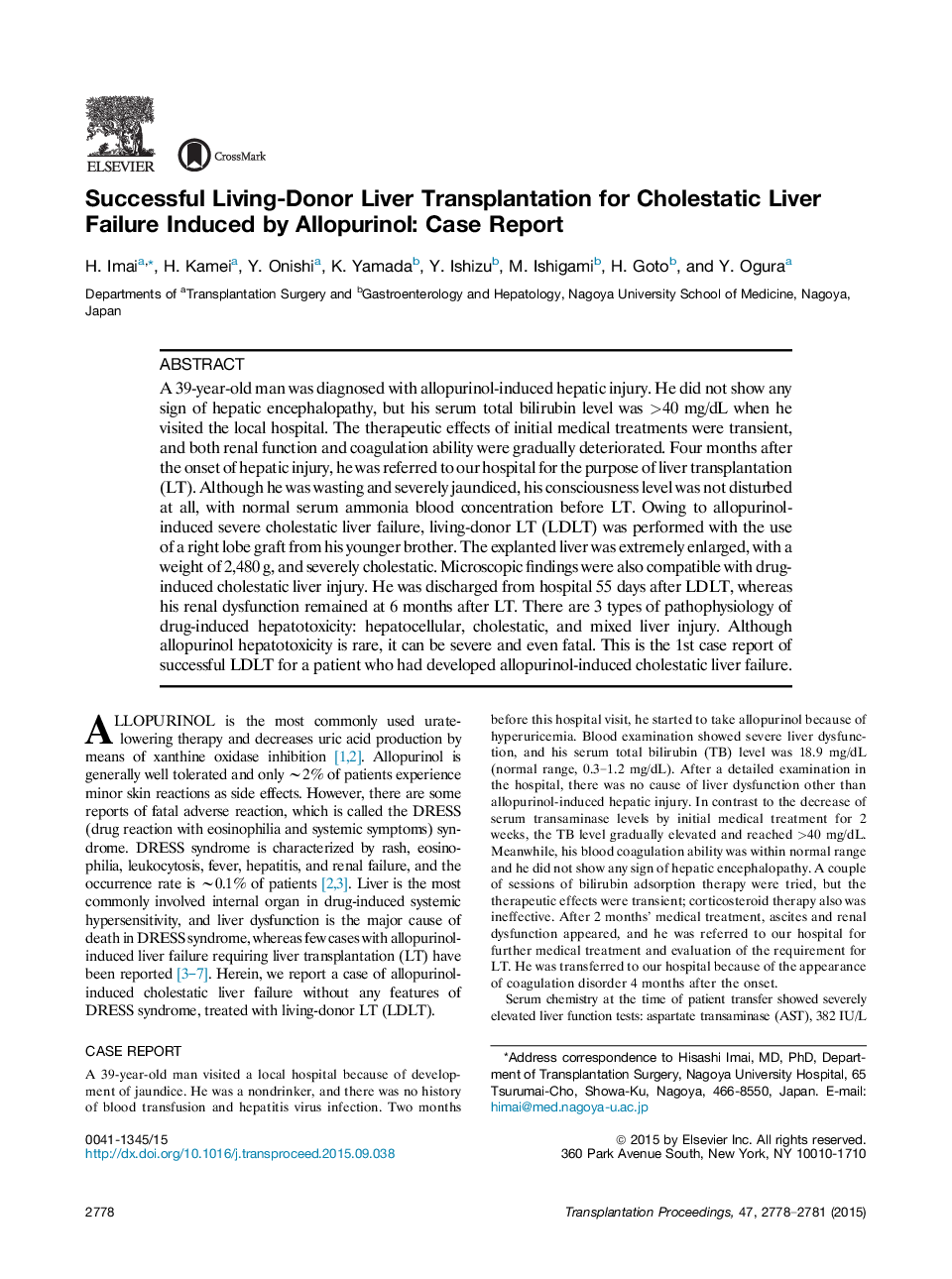| Article ID | Journal | Published Year | Pages | File Type |
|---|---|---|---|---|
| 4255932 | Transplantation Proceedings | 2015 | 4 Pages |
•We report a case of allopurinol-induced cholestatic liver failure successfully treated with living-donor liver transplantation.•Although allopurinol-induced liver failure is commonly associated with DRESS syndrome, this case had no features of DRESS syndrome.•Few cases with allopurinol-induced liver failure requiring liver transplantation have been reported.
A 39-year-old man was diagnosed with allopurinol-induced hepatic injury. He did not show any sign of hepatic encephalopathy, but his serum total bilirubin level was >40 mg/dL when he visited the local hospital. The therapeutic effects of initial medical treatments were transient, and both renal function and coagulation ability were gradually deteriorated. Four months after the onset of hepatic injury, he was referred to our hospital for the purpose of liver transplantation (LT). Although he was wasting and severely jaundiced, his consciousness level was not disturbed at all, with normal serum ammonia blood concentration before LT. Owing to allopurinol-induced severe cholestatic liver failure, living-donor LT (LDLT) was performed with the use of a right lobe graft from his younger brother. The explanted liver was extremely enlarged, with a weight of 2,480 g, and severely cholestatic. Microscopic findings were also compatible with drug-induced cholestatic liver injury. He was discharged from hospital 55 days after LDLT, whereas his renal dysfunction remained at 6 months after LT. There are 3 types of pathophysiology of drug-induced hepatotoxicity: hepatocellular, cholestatic, and mixed liver injury. Although allopurinol hepatotoxicity is rare, it can be severe and even fatal. This is the 1st case report of successful LDLT for a patient who had developed allopurinol-induced cholestatic liver failure.
